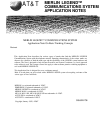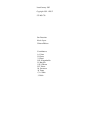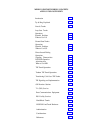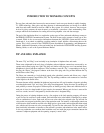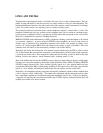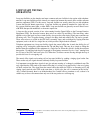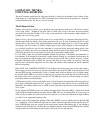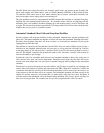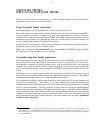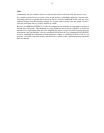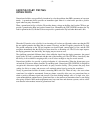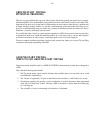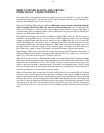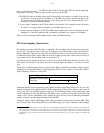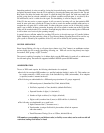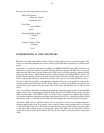-2-
INTRODUCTION TO TRUNKING CONCEPTS
The way lines and trunks have been used to meet customers’ needs over past decades is rapidly changing.
T-1, ISDN technology, fiber optics, and other advances in telecommunications are forcing us to rethink
what lines and trunks should be used for a PBX or Key system. It is critical, however. that everyone
involved in giving customers the most advanced, yet economical. system have a basic understanding of the
concepts which are the foundations for sending and receiving telephone voice and data messages.
The goal of this Application Note is to explain the various types of lines and trunks which may connect to
the MERLIN LEGEND Communications System. The Note focuses on the concepts of each type of line
or trunk. While it also covers major interactions between the LEGEND system and the various
lines/trunks, it is not aimed at explaining everything needed to install, initialize. and maintain them on the
system. This is fully covered in the LEGEND System Installation, Programming, and Maintenance
Manual. Additional information on lines and trunks may be found in the LEGEND PBX and Key Systems
Planning Guides, as well as the Systems Reference Manual.
TIP AND RING EXPLAINED
The terms “Tip” and “Ring” occur inevitably in any description of telephone lines and trunks.
These terms originated in the early days of telephony when telephone connections were made by an
operator who inserted a plug into a jack. This plug was similar to the plug on a set of conventional stereo
headphones in that it had three conductors. These conductors were the “Tip,” corresponding to the tip of
the plug. the “Sleeve,” the longest Conductor at the base of the plug, and a ring of metal between the Tip
and the Sleeve called “Ring.”
The Sleeve was connected to a local electrical ground at the subscriber's premises and did not carry a signal
to the telephone company Central Office (CO). The Tip and Ring conductors each connected to a wire that
carried signals to the central office.
The terms became solidly embedded in telephone jargon and are still used in modem, electronic switching
even though the actual “tips” and “rings” have long since disappeared. Today the terms Tip and Ring are
used primarily as means for people in different places to identify precisely where each individual wire in
each pair of wires (in a huge bundle of wires) needs to be connected. When a pair of wires is reserved for
service as a trunk, one wire is designated Tip and the other wire is designated Ring.
During the process of ordering telephone service, a line assigner at the local operating company will reserve
a pair of wires for each line or trunk ordered. Each individual wire in the bundle is identified by a unique
color or combination of colors. Each trunk will have one color-coded wire assigned as the Tip lead and one
color-coded wire assigned as the Ring lead of that particular trunk. For instance, a cable might contain one
solid blue wire which would be reserved as the Ring lead on a given trunk, and one blue-and-white striped
wire which would be reserved as the corresponding Tip lead for that same trunk. The line assigner will
then furnish this information to installers at the customer’s premises and technicians in the central office.
In this way technicians can coordinate their installation work and make the proper connections between the
customer’s telephone equipment and the operating company’s central office.



